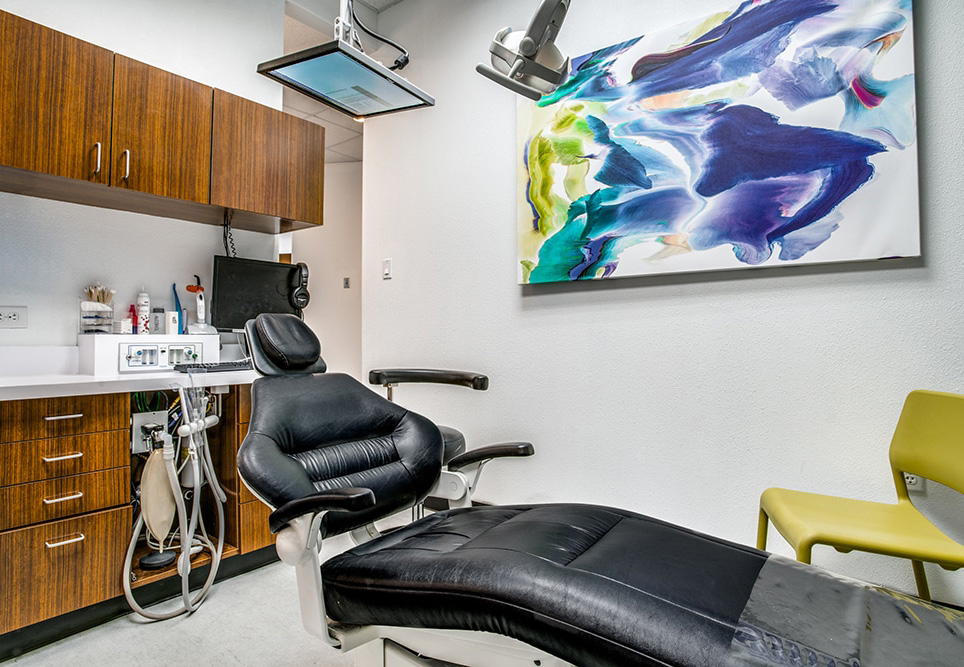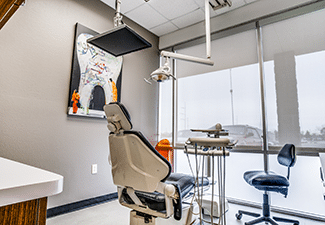 You brush and floss your teeth every day to keep your smile in the best possible shape. After all, we try our best to avoid cavities whenever we can. With that said, sometimes they still occur despite our efforts. It is always a bummer when your dentist tells you that you have one and need a filling; however, the procedure is exceedingly common and fixes the issue quickly and effectively. In today’s blog, your Richardson, TX, family dentist discusses the cause of cavities and how we can treat them with dental fillings.
You brush and floss your teeth every day to keep your smile in the best possible shape. After all, we try our best to avoid cavities whenever we can. With that said, sometimes they still occur despite our efforts. It is always a bummer when your dentist tells you that you have one and need a filling; however, the procedure is exceedingly common and fixes the issue quickly and effectively. In today’s blog, your Richardson, TX, family dentist discusses the cause of cavities and how we can treat them with dental fillings.
What Is A Cavity And What Causes It?
Cavities are the most commy kind of tooth decay and are typically caused by lifestyle and diet choices. Sugary, acidic foods, and beverages are the most common culprits that can lead to this decay. The consumption of these foods and drinks when combined with poor brushing habits greatly increase your chances of getting one. Your genetics can also influence how susceptible you are to them, as well.
Coronal cavities are the most prevalent kind, and they are found between your teeth and on chewing surfaces. If the decay is deeper within the tooth, it can be a root cavity. These are typically more painful as they can affect the nerves deep within the tooth. They are more common when the gum line recedes and can worsen over time. Because of this, it is important to treat any decay as quickly as possible. We encourage you to visit your dentist every six months for checkups and cleanings, so they can stay on top of any changes in your smile and treat you sooner rather than later.
Dental Fillings Treat Decay
If your dentist determines that you do, in fact, have a cavity they will most likely recommend a dental filling to treat it. When you undergo this procedure, your dentist carefully removes the affected part of the tooth and then shapes it to easily receive the filling. Once they do, they place it and then polish it, so it feels smooth and comfortable in your mouth. We make the filling with a biocompatible composite resin so it looks just like the rest of your teeth. If you are particularly nervous or stressed about the procedure, we are happy to provide you with sedation. We want all of our patients to be as comfortable and relaxed as possible, so please do not hesitate to ask us. After you leave, please be sure to continue seeing us regularly for exams so we can monitor your mouth to make sure no other decay is underway.
What We Do For More Severe Decay
In some cases, the decay can occur deeper within your tooth. When this happens, a root canal is often the preferred course of treatment. We suggest this when the decay cannot be removed with a filling. The most common indicators that you need this procedure are when you experience swelling, persistent tooth pain, and tenderness. These indicate that you are dealing with an infection, which is often brought on by decay. It can also stem from a cracked tooth or an external trauma to your mouth. Persistent tooth pain is often caused by the tooth’s pulp becoming infected. The pulp is the center part of a tooth and is made up of blood vessels, connective tissue, and cells. There are also lots of nerves here, which is why an infection can be so painful. This is to say that if you do experience consistent tooth pain, be sure to contact your dentist as soon as possible so they can inspect it and recommend the appropriate treatments.
What Does The Treatment Consist Of?
The point of root canal treatment is to get rid of bacteria and infected tissues from the pulp of your tooth. Again, when this part of the tooth is infected, a lot of damage can occur. This part of the tooth is connected to the root canal, which is where this procedure gets its name from. When you do have an infection here, you need to act quickly. If not, there’s a chance the tooth could become irreparable, leading to you needing an extraction to preserve the rest of your smile’s health.
Steps To Take To Prevent Decay And Infection
Preventative care is the area of dentistry that focuses on preventing problems before they fully develop. The best ways to avoid serious issues are to brush your teeth twice a day, floss once, and see your dentist every six months. When you brush, be sure to do so for at least two minutes. If it has been a while since you’ve timed yourself, we suggest setting a timer on your phone, so you can reacclimate to what this duration feels like. Also be sure not to brush too hard, as this can damage your enamel and make you more susceptible to decay down the road. When you floss, make sure you give yourself enough so you are not putting the particles you removed back between your teeth. Also, don’t floss so hard that you are regularly hurting your gums and making them bleed.
It is also important to store your toothbrush properly and replace it every three months. Make sure you don’t let its bristles touch anything else when you are storing it, and avoid brush covers, as they can promote mold growth. Once you start noticing your bristles falling out or losing their structural integrity, it is time to replace it. While you can choose any type of toothbrush you want, one with soft bristles typically helps you from damaging your teeth from brushing too hard. Ultimately, by brushing and flossing regularly as well as visiting your dentist twice a year, you are making great strides toward avoiding decay and infection.
Contact Us To Learn More About Decay And Its Treatments
If you have any questions about cavities and fillings, we invite you to schedule a consultation by calling the Viva Dental Family Dentistry office nearest you at (214) 337-7800 (Dallas) or (972) 437-6000 (Richardson).












